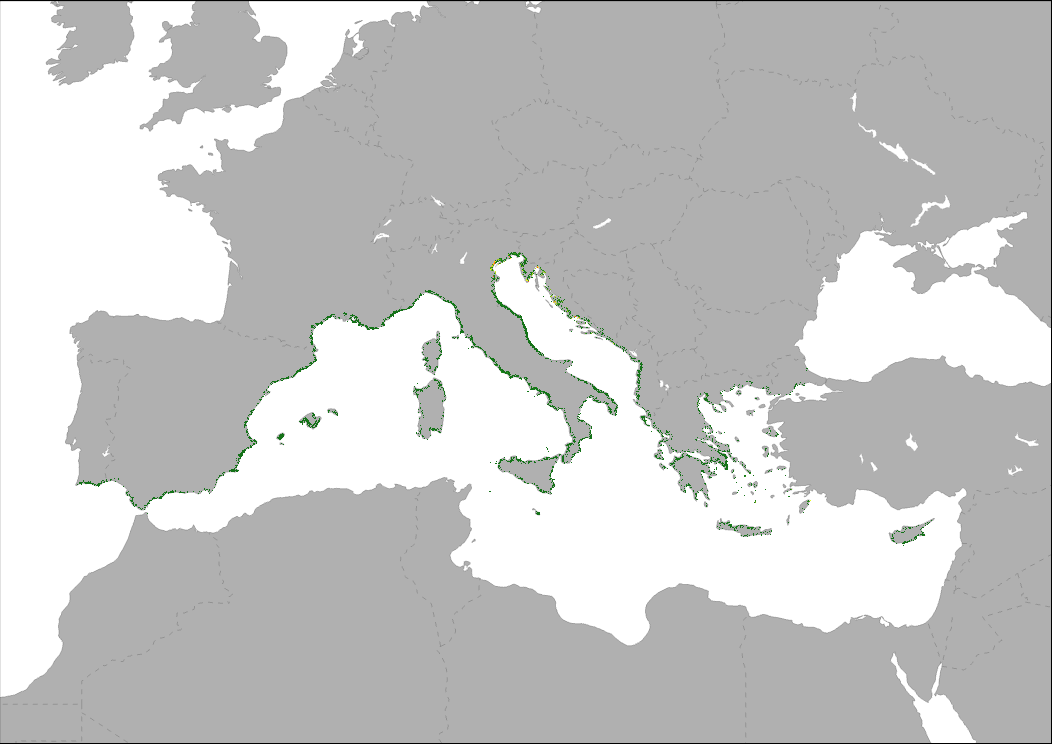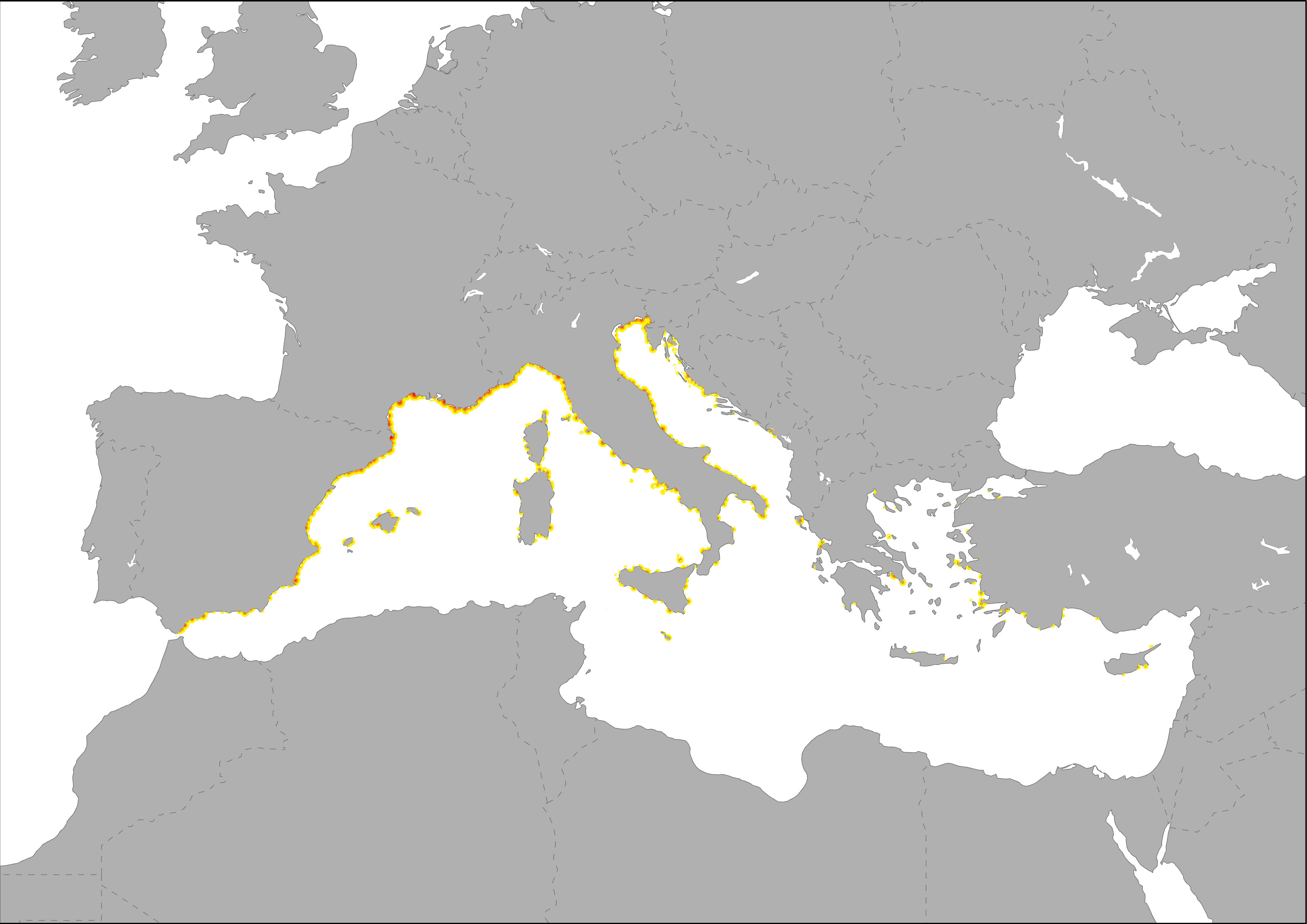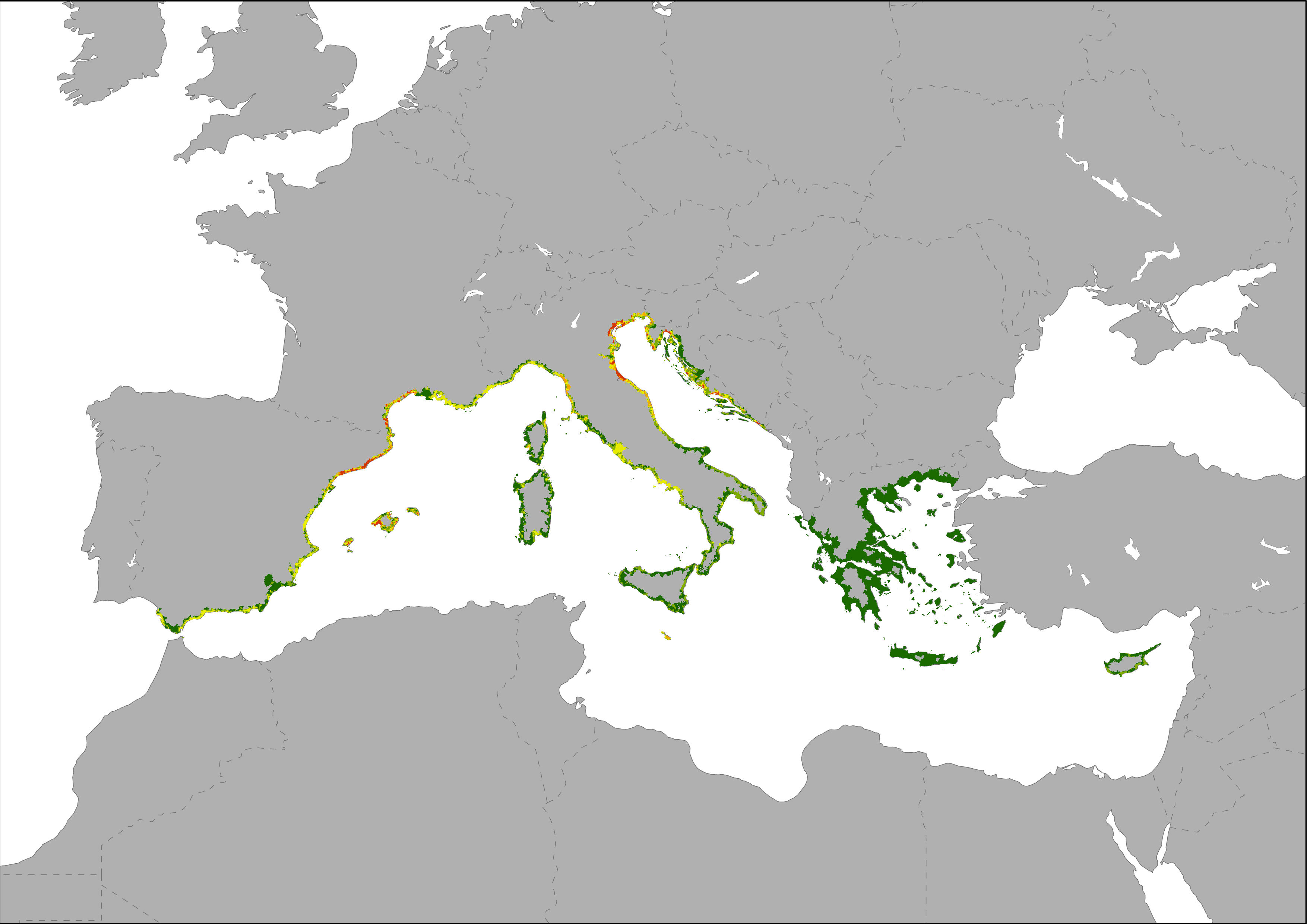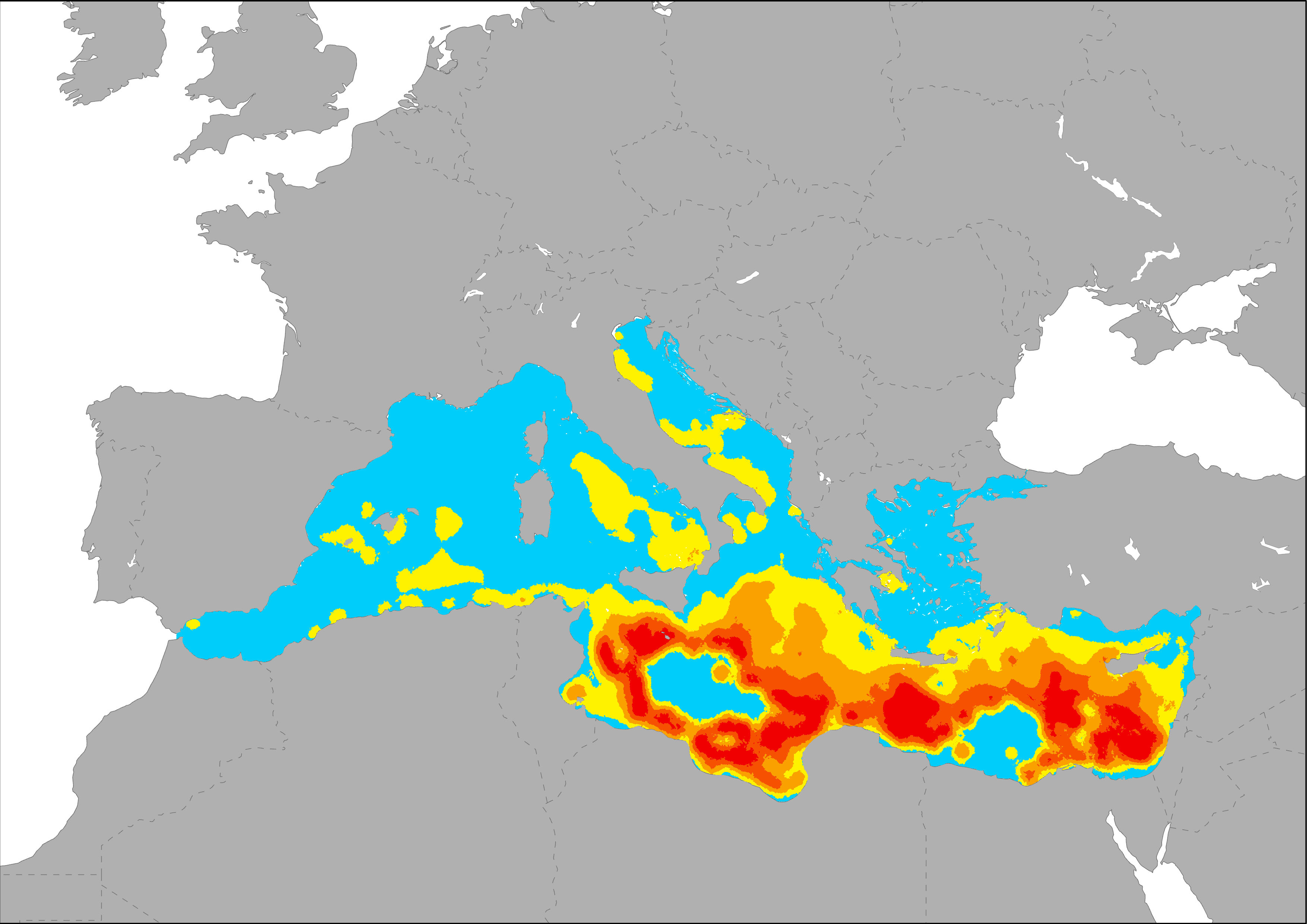Keyword
Coastal and Maritime Tourism
5 record(s)
Type of resources
Available actions
Topics
Keywords
Contact for the resource
Provided by
Formats
Representation types
Update frequencies
Status
Scale
Resolution
panaceaKeywords
GEMET keywords
-

Map representing the number of establishments per km2, as an indicator of the local intensity of tourism capacity. This pressure index is based on Eurostat tourism statistic on number of tourism accommodation establishments and the DMSP-OLS Nighttime Lights Time Series image. Eurostat's tourism capacity statistics differentiate between coastal and non-coastal areas within a NUTS2 region. The total number of establishments in coastal areas of a NUTS2 region was disaggregated to the most intense nighttime light emission pixels of the Nighttime Lights Time Series assuming that most bed places are located in areas with high nighttime light emissions. Results are showing low to high intensive tourism capacity per km2 pixel.
-

The map highlight the potential intensity of pressure related to marinas on marine ecosystems. The dispersal of yachting port-derived pollution was modeled as a diffusive plume up to 20 km based on the data on mooring capacity of each yachting port. The spatial proximity of yachting ports increases the overall pressures. The influence was modeled as a buffer with and exponential decay based on self calculations using mooring capacity of each yachting port. Calculations were made following the same methodology developed for ESaTDOR Project (ESPON, 2013). The extension area is based on HELCOM, 2012 and it is the theoretical maximum expansion distance for pressures generated by recreational shipping.
-

Map representing the number of nights in coastal areas per km2, as an indicator of the local intensity of tourism demand. This pressure index is based on Eurostat tourism statistic on number of tourism nights in accommodation establishments and the DMSP-OLS Nighttime Lights Time Series image. Eurostat's tourism demand statistics differentiate between coastal and non-coastal areas within a NUTS2 region. The total number of nights in coastal areas of a NUTS2 region was disaggregated to the most intense nighttime light emission pixels of the Nighttime Lights Time Series assuming that most bed places are located in areas with high nighttime light emissions. Results are showing low to high intensive tourism demand per km2 pixel.
-

Map showing bed places per km2 as an indicator of the local intensity of tourism capacity. This index is based on Eurostat tourism statistic on bed places and the DMSP-OLS Nighttime Lights Time Series image. Eurostat's tourism capacity statistics differentiate between coastal and non-coastal areas within a NUTS2 region. The total number of beds in coastal areas of a NUTS2 region was disaggregated to the most intense nighttime light emission pixels of the Nighttime Lights Time Series assuming that most bed places are located in areas with high nighttime light emissions. Results are showing low to high intensive tourism capacity per km2 pixel.
-

The indicators represent the distribution and degree of accumulation of marine in the Mediterranean Sea. Main source data were modelled by Lebreton et al., 2012 using a Lagrangian particle tracking model to simulate 30 years of input and transport of floating debris in the world’s ocean. The relative contribution of different sources to the total amount was taken into account in their model.
